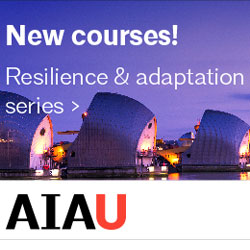Facilities director Tom Parent, AIA, discusses St. Paul Public Schools’ efforts to build equity and inclusion into the school system’s flexible new facilities master plan
By Amy Goetzman
Imagine you have 58 schools whose 72 buildings all need major renovations because their function has changed so significantly since they were built. You’re on a tight budget, and you have large advisory groups that include members who act like children (because they are children). Oh, and you expect the way that schools are used to continue to rapidly change.
That’s exactly the scenario that St. Paul Public Schools (SPPS) faced as it set out to create a new facilities master plan for the largest school district in Minnesota. “This was our chance to address problems that have stymied us for decades, problems that extended beyond things like roofs and mechanical systems,” says SPSS facilities director Tom Parent, AIA. “We needed to make changes that will significantly impact the day-to-day experience of students, parents, and educators.”
To help it develop new environmental principles and standards for all the K–12 pathways students take through the system, SPPS engaged DLR Group, LSE Architects, Miller Dunwiddie, U+B Architecture and Design, and Wold Architects and Engineers. And it tasked Cuningham Group Architecture with the larger district-wide vision.
Cuningham principal Margaret Parsons, AIA, embraced the challenge. She’s worked with SPPS since the mid-1990s and knows its 72 buildings well. She knew that the schools, which serve more than 39,000 students, faced structural, design, and accessibility issues, and that in recent years technology has dramatically transformed education. But her larger mission was to help the district achieve its greater goals.
SPPS is urgently trying to close the achievement gap between its white students and its students of color, who constitute 78 percent of the population. Additionally, 100 different languages are spoken in the district, and 72 percent of the students live in poverty.
“The facilities master plan is about the students more than it’s about the buildings,” says Parsons. “The district wants the buildings to be warm, safe, and dry—that’s a given. But they also want to be proactive about connecting the physical learning environment with district goals. That means solving facility problems that are barriers to teaching and learning.”
The district’s oldest buildings date back to the 1890s and serve what Parsons calls a “cells and bells” school model that no longer works. “A 21st-century learning environment must accommodate a wide range of teaching styles, with an emphasis on collaborative, hands-on learning and technology,” she says. “The tech piece is crucial and unpredictable. A decade ago, when the district underwent its last facilities assessment, we didn’t know that today every student would have an iPad at their desk. That’s transformational.”
“We wanted a 10-year plan that reflects our vision of what a flexible learning environment can be,” says Parent. “We might not know what, for example, a media center will need to look like in five years, so we focused on meeting today’s needs and creating adaptability for those inevitable future changes.”
The challenges are not unique to St. Paul, he adds: “Across the nation, school districts are having difficulties keeping up with the pace of changes in the way kids learn today. There are seismic shifts going on that mean that, in many ways, our facilities are not appropriate anymore.”
Parent, an architect who transitioned to SPPS after working extensively on learning spaces at DJR Architecture, appreciates how an architecture background gives him a problem-solving mindset that has served the process well. In spring 2015, he brought hundreds of students, parents, teachers, administrators, and community members into design meetings with teams from the six partnering architecture firms to learn how the school environments have shaped student and educator experiences.
“There’s a huge sense of responsibility in making these spaces work,” he says. “By creating connections across all the groups involved, we could better prioritize solutions that would have the most impact, efficiency, equity, and meaning to the people who would use the spaces.”
The result is a plan that touches every school in the district. A few examples:
- At Humboldt High School, renovations will add a lobby to a building that lacked a clear entryway. The space will double as a Digital Commons, and new student gathering areas throughout the building will double as informal learning spaces.
- RiverEast School will move into a new building in 2018, which will enable the special-education program to provide targeted instruction and therapy to its population of high-needs students.
- St. Anthony Park Elementary, Highland Park Elementary, Como Park Senior High, and Adams Spanish Immersion will be remodeled to create clear entry points that serve as gathering spaces and information hubs. “If you can’t find the front entry—if there’s no person to welcome you into the building and create a personal connection—it’s a problem,” says Parent.
- Several district pre–K programs are housed in spaces that were designed for older students. Renovations will right-size the spaces to serve the needs of these younger learners. “All the research tells us that pre–K is a critical time for future success. We can support these developmental needs by designing appropriate spaces,” says Parent.
Over the coming decade, other schools will modernize their learning environments, receiving new or updated media centers, cafeterias, playgrounds, performance spaces, daylighting schemes, technology systems, security programs, and individual gender-neutral bathrooms. The buildings will become more flexible so they can adapt to whatever comes next, because change is inevitable. In the meantime, students will have more welcoming, more effective environments in which to learn.
“Kids only go through school once,” says Parsons. “We understood very clearly that everything we would do in this process would have an impact on people’s lives. Ultimately, that’s what guided us. ”


